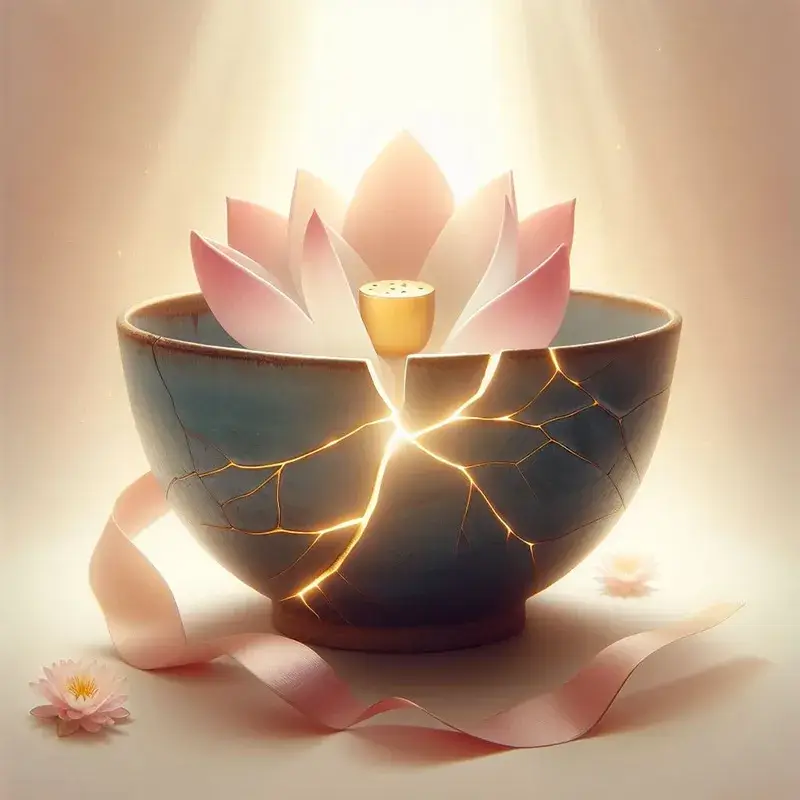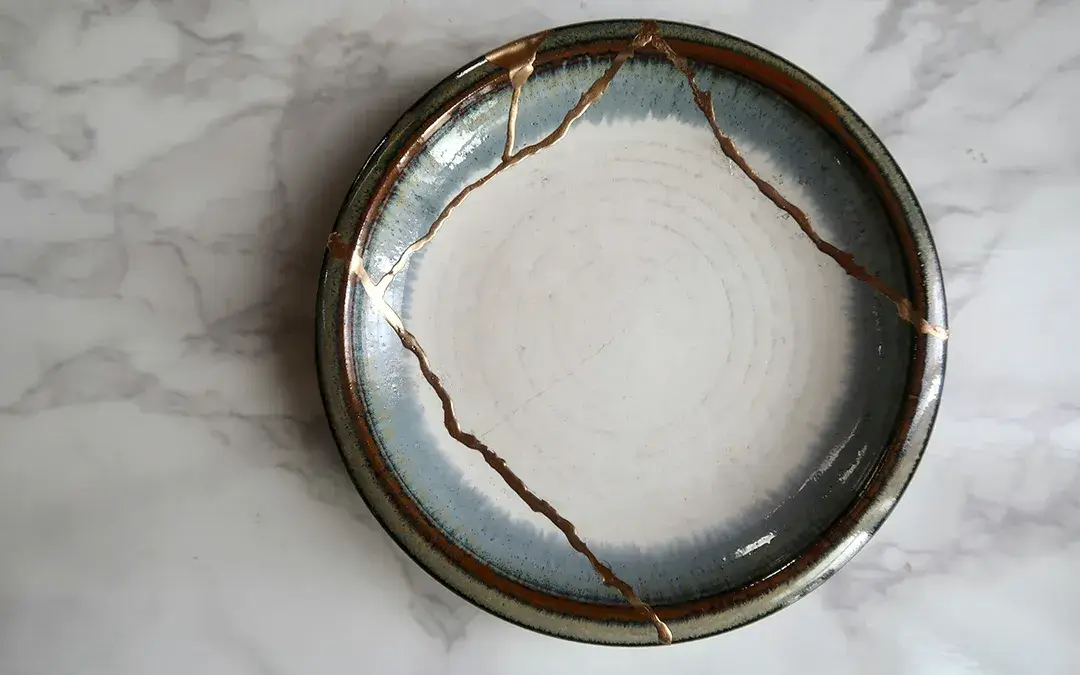The Origins of Kintsugi: A Golden History
Kintsugi, meaning “golden joinery,” is a centuries-old Japanese art form that invites us to see beauty not in perfection, but in restoration. This tradition began in the 15th century when a Japanese shogun sent his cherished tea bowl to China for repairs after it had been broken. It was returned clumsily stapled together with metal—a fix that put the pieces back together but lacked functionality and grace. Disappointed, he asked Japanese artisans to restore the bowl in a way that honored its value.
Their response was revolutionary: they repaired the cracks using lacquer mixed with powdered gold. Instead of hiding the damage, they illuminated it. The once-shattered lines shimmered with gold, giving the bowl not only a new life but a more beautiful and meaningful one than before.
Life Lessons from Kintsugi
Life, like pottery, can fracture. We experience illness, trauma, transitions, and losses that leave visible and invisible cracks. Cancer—especially—alters us. It can change how we see ourselves, how we move in the world, how we connect with those we love, and how we relate to our sexual identity and our bodies.
The wisdom of kintsugi reminds us that healing is not about returning to who we were before. It’s about honoring who we are now, in all our complexity. It’s about seeing the marks left by cancer—not as something to erase—but as a map of survival, strength, and self-reclamation.

The Intimate Cracks
For many, cancer treatment alters not just physical function but the way we experience intimacy, sensuality, and desire. Scars, surgical changes, hormonal shifts, fatigue, and pain can reshape sexual connection and body image. The result can feel like disconnection—from self, from partner, from pleasure, from a sense of being whole.
Sexual healing, like kintsugi, is an intentional process. Not rushed. Not forced. It invites us to explore what feels safe, what feels good, and what we long for—without shame, without apology.
- Reclaiming your sexual identity after cancer might include:
- Learning to touch your body with kindness again
- Grieving what was and discovering what is possible now
- Finding new ways to experience pleasure
- Reimagining intimacy with a partner
- Naming your needs, fears, and hopes out loud
- Seeking support from therapists, counselors, and trusted guides
Unique Golden Lacquer Ingredients
Just as no two kintsugi repairs are the same, your path to restoration is yours alone.
Your golden lacquer might include:
- Acceptance of your body and its evolving story
- Connection with those who meet you with tenderness
- Restoration through pleasure, presence, and permission
- Patience for the ebb and flow of healing
- Friendship that nourishes your sense of belonging
- Counseling for emotional and relational renewal
- Hydration & Nutrition to support the body’s vitality
- Movement that awakens sensation and strength
- Sleep that allows for cellular and emotional repair
This is not about fixing what’s broken. This is about honoring who you are today wholly. And discovering that you—in this changed body, in this next chapter—are still worthy of love, pleasure, connection, and peace.
A Note from Traci
I hope this finds you growing, even if quietly. And if today feels heavy or numb or disconnected, may this story remind you that healing often begins in the reaching: a gentle stretch of the body, a quiet breath, an open hand extended toward support.
You are not alone in this. Your golden repair is unfolding. If you need support, please reach out to me at 918-283-7130.
Take Peace,
Traci Owen, RN, BSN, CSC-S, SE
Intimate Pathways Center for Sexual Health
Follow us on Facebook!

